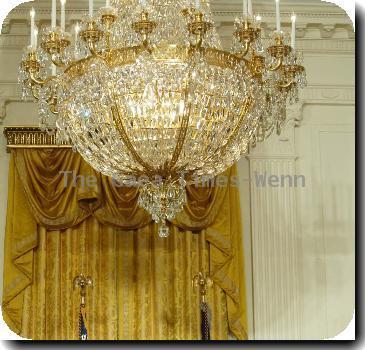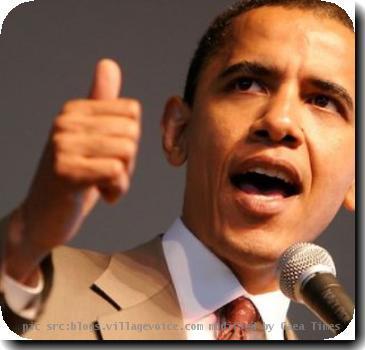New agreement to cut US, Russia nuclear arsenals; signing expected soon by Obama, Medvedev
By Robert Burns, APWednesday, March 24, 2010
Signing expected soon on new US-Russia nuke treaty
WASHINGTON — After long and trying negotiations, the U.S. and Russia have reached agreements for a historic new treaty to reduce the nuclear arsenals of former Cold War rivals, officials said Wednesday. President Barack Obama and Russian President Dmitry Medvedev are expected to sign it soon in Prague.
The deal is seen as an important step toward rolling back global nuclear dangers and sealing an increased level of trust and cooperation between the U.S. and Russia, who possess the vast majority of the world’s nuclear arms and have labored under strained relations in recent years.
Obama and Medvedev are expected to seal the deal when they talk by telephone this week, setting the stage for a White House campaign to win Senate ratification. The treaty also must win approval by the Russian Duma, and the two legislative processes are likely to take months.
Robert S. Norris, a longtime analyst of U.S. and Russian nuclear arsenals, said Senate ratification would not be easy.
“Hard negotiations with the Russians will now be followed by hard negotiations with Republican senators to achieve ratification,” Norris said.
Though the State Department said the two countries were still working out unspecified final technical details, spokesman Mark Toner said there had been discussions with the Czech government about holding a signing ceremony in Prague — where Obama last April declared his vision of a nuclear-free world.
In fact, Czech officials went ahead and announced that Prague would host the signing. They did not give a date.
Russia’s Interfax news agency quoted the Russian ambassador to the Czech Republic as saying the new treaty would be signed on April 8. U.S. officials said that was a suggested date that would not be settled upon until Obama talks with Medvedev.
The new agreement to reduce long-range nuclear weapons would replace the 1991 Strategic Arms Reduction Treaty, which expired in December. An important feature of the new deal is that it includes a mechanism for verifying that each side complies — an element that was absent from a 2002 deal, known as the Moscow Treaty, that accelerated the weapons reductions laid out in the 1991 treaty.
The Moscow Treaty set limits on both sides’ strategic nuclear warheads at between 1,700 and 2,200. The new deal, whose provisions have not been made public, is expected to lower that to about 1,500. It also would reduce the permissible number of strategic launchers — the missiles and bombs that deliver warheads to their targets.
Obama spent an hour Wednesday in the White House briefing Democratic Sen. John Kerry, chairman of the Senate Foreign Relations Committee, and Sen. Richard Lugar, the committee’s ranking Republican. Both would play major roles in ratification of the emerging treaty.
Kerry said he and Lugar would hold hearings to examine details.
“A well-designed treaty will send an important message to the rest of the world that America is prepared to lead efforts with key stakeholders to reduce the threat of nuclear weapons,” he said.
Maria Lipman, an expert with the Moscow Carnegie Center think tank, said this week the new treaty could not only reduce the size of both country’s nuclear arsenals but also change the psychology of the U.S.-Russia relationship, which has been strained for at least the past six years.
“Gradually the attitude may change to where America is not seen from Russia as a force to be treated with suspicion,” she said.
Richard Burt, a former U.S. ambassador and chief U.S. negotiator of the original START agreement, described the about-to-be-announced follow-on treaty as the first significant arms reduction agreement in nearly two decades. He said it advances momentum toward eliminating nuclear weapons.
“This agreement will set the stage for further cuts in U.S. and Russian arsenals and multilateral negotiations for reductions by all nuclear weapons countries,” Burt said.
Two senior U.S. officials in Washington said the technical issues still to be resolved were in an “annex” to the main treaty, and they foresaw no hurdles to completing the entire deal within days. They spoke on condition of anonymity due to the sensitive discussions. One official said an announcement that the treaty is complete is expected by Friday.
A Kremlin source, speaking by telephone to The Associated Press, said all the documents, including the treaty, had been agreed upon. Russian Foreign Minister Sergey Lavrov said last week that the treaty was 20 pages long, with an extensive protocol attached.
Negotiations, which have been under way in Geneva since last spring, became bogged down in recent months on disputes over verification measures and Russia’s objection to U.S. missile defense plans for Europe.
Russian negotiators have balked at including some intrusive weapons verification measures in the new treaty. The Obama administration has warned that without these, Senate ratification could prove difficult.
The agreement would still leave each country with a large number of nuclear weapons, both deployed and stockpiled. Norris, the nuclear weapons expert, estimates that the U.S. has 2,150 deployed strategic nuclear weapons and the Russians have about 2,600.
The expired START treaty, signed by Soviet President Mikhail Gorbachev and President George H.W. Bush, required each country to cut its nuclear warheads by at least one-fourth, to about 6,000, and to implement procedures for verifying that each side was sticking to the agreement. The 2002 Moscow Treaty lowered the warhead limit to 1,700 to 2,200.
__
Associated Press writers Mark S. Smith, Desmond Butler, Matthew Lee and Jennifer Loven in Washington and Karel Janicek in Prague contributed to this report.
Tags: Barack Obama, Czech Republic, District Of Columbia, Eastern Europe, Europe, International Agreements, John Kerry, Moscow, North America, Nuclear Weapons, Prague, Russia, United States, Washington, Weapons Administration, Weapons Of Mass Destruction

